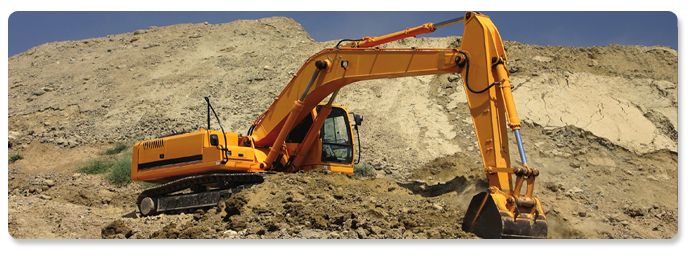You Are Here -> Home ->Abrasion Resistance
Abrasion Resistant Plate Suppliers
Abrasion Resistant Plate Stockists
Abrasion resistance is a property which allows a material to resist wear. Materials which are abrasion resistant are useful for situations in which mechanical wearing and damage can occur, including delicate applications such as the construction of space shuttle components. Numerous companies manufacture abrasion resistant products for a variety of applications, including products which can be custom fabricated to meet the needs of specific users.
When a product has abrasion resistance, it will resist erosion caused by scraping, rubbing, and other types of mechanical wear. This allows the material to retain its integrity and hold its form. This can be important when the form of a material is critical to its function, as seen when moving parts are carefully machined for maximum efficiency. Abrasion resistant materials can be used for both moving and fixed parts in settings where wearing could become an issue.
There are a number of ways to make a material resistant to abrasion. One option is to utilize a special coating which creates a hardened layer over the material and resists friction. Some materials are also naturally extremely hard, and are ideal for settings in which abrasion resistance will be desirable. Other materials can be specifically formulated for increased hardness, as seen in plastics facilities which manufacture abrasion resistant plastics with the use of chemicals which harden and strengthen the plastic.
MD Exports LLP inc is largest suppliers of Abrasion Resistant Plate. we are supplying Abrasion Resistant Plate in Saudi arabia, Kuwait, Qatar, Oman, Yemen, UAE, Iran, Turkey, Kazakhstan, Greece, Singapore, Thailand, Indonesia, Vietnam, South Africa,South America,Brazil, India, Australia, Egypt.we assured our client that we are standing behind our product which we have supplied as well as we issued a quality certificate along with our product which we manufacture supplies and exports
we are also manufacturers, suppliers, exporters and stockists of Stainless Steel plate, Quenched & Tempered Steel plate , Pressure Vessel Steel plate, High Strength Steel plate, High Nickel Alloy plate, HIC plate, Corten Steel, Clad plate, Alloy Steel plate
Fabrication of Abrasion Resistant Steel :
Welding :
Abrazo 400 can be welded under normal conditions (if you require advice on welding, machining or forming then please contact any one of our offices) using MMA, MOG and SAW without preheat, up to a combined thickness of 60mm, provided hydrogen controlled electrodes are used. Consumables should be dried in accordance with scale ‘D’ of BS 5135. Consumables should be chosen on the basis of whether or not the weld metal is exposed to wear conditions.
Machining :
Machining or drilling is more difficult due to hardness. For 400BHN use high-grade cobalt HSS E drilling tools and for 500BHN hard metal drilling tools are necessary.
Forming :
Abrasion steels can be readily cold formed. Compared with steels of lower yields, three factors should be considered:
- Higher press forces
- A greater bend radius is required
- Spring back.
Flame Cutting :
Material can be cut using conventional flame cutting practices without the need for preheat at ambient temperature. The following cutting parameters are recommended:-
|
PlateThickness(mm)
|
Nozzle Size (LPN mm) |
Cutting O2 (Lb.in2) |
Heating O2 (Lb.in2) |
Heating propane (Lb.in2) |
Cutting speed (mm/min) |
CEV max % |
|
12.5
|
10-25
|
45
|
40
|
18
|
450
|
0.40
|
|
15.0
|
10-25
|
50
|
40
|
10
|
490
|
0.40
|
|
25.0
|
25-40
|
60
|
40
|
20
|
400
|
0.52
|
|
40.0
|
40-60
|
70
|
40
|
10
|
310
|
0.52
|
|
50.0
|
40-60
|
75
|
40
|
10
|
300
|
0.57
|
|
65-80
|
60-100
|
71
|
31
|
13
|
239
|
0.57
|
Milling :
Abrasion resistant steel can be machined by milling.
The following recommendations are given for general guidance:-
|
Steel Grade
|
Cutting Speed (mm/min) |
Feed (mm/tooth) |
|
Abrazo 400* |
100 |
0.10-0.15 |
* For further information on 450, 500 please contact us for details.
Cold Bending :
Where possible, cold bending should be carried out with the bend axis perpendicular to the rolling direction, this being the less onerous of the two directions. The following table contains guidelines for bending to a 90°angle. In general however, bending radii should be as generous as possible.
|
Bending direction (bend axis)
|
Minimum inside Bending radius |
Minimum die opening |
|
Perpendicular to rolling direction |
3t |
8.5t |
|
Parallel to rolling direction |
4t |
10t |
Please select a specific grade to find out more information.
- HARDOX 500
- HARDOX 550
- HARDOX 400
- HARDOX 450
- HARDOX 600
- SUMIHARD
- NICRODUR
- BRINAR
- DUROSTAT
- DILLIDUR
- JFE EVERHARD

